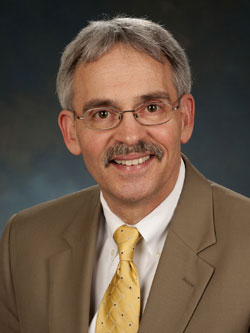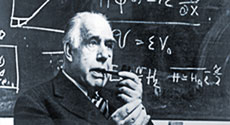Niels Bohr Lecture by Bradley M. Peterson
Solving the Quasar Mystery: A 50-Year Quest
 Abstract: Just over 50 years ago, the first radio surveys of the sky led to the identification of baffling new celestial sources with characteristics unlike those of any other known astronomical objects. One class of these objects came to be known as “quasi-stellar radio sources,” or “quasars.”
Abstract: Just over 50 years ago, the first radio surveys of the sky led to the identification of baffling new celestial sources with characteristics unlike those of any other known astronomical objects. One class of these objects came to be known as “quasi-stellar radio sources,” or “quasars.”
The most straightforward interpretation of the observations indicated that quasars are among the most distant and intrinsically brightest objects in the universe. At the same time, however, they must also be surprisingly small and dense. This led inevitably to the apparent paradox that the most luminous objects in the universe are powered by spectacularly massive “black holes,” objects so dense that not even light can escape from them, and whose existence had yet to be proven.
This is the story of how quasars and supermassive black holes and their role in the cosmos have come to be understood.
- Wednesday, May 13, 2015 at 15:15 in Aud. 3 at HCØ.
About Bradley M. Peterson
Bradley M. Peterson has been on the faculty of The Ohio State University since 1980 and has served as Chair of the Department of Astronomy since 2006. His primary research interests are quasars and the supermassive black holes that power them. He is an active user of both ground-based and space-based telescopes. He is a member of the NASA Advisory Council and chairs the council’s Science Committee, and is also a member of the James Webb Space Telescope Advisory Committee for the Space Telescope Science Institute.
Dr. Peterson has authored or co-authored over 200 research papers and two textbooks on astrophysics. He is an elected Fellow of the American Association for the Advancement of Science and in 2010 received a Distinguished Scholar Award from the university. Dr. Peterson received a Bachelor of Physics degree from the University of Minnesota in 1974 and a PhD in Astronomy from the University of Arizona in 1978.
|
Coffee and Cookies
Coffee, tea and cookies will be served outside the auditorium 15 minutes before the lecture.

 Niels Bohr Lectures
Niels Bohr Lectures